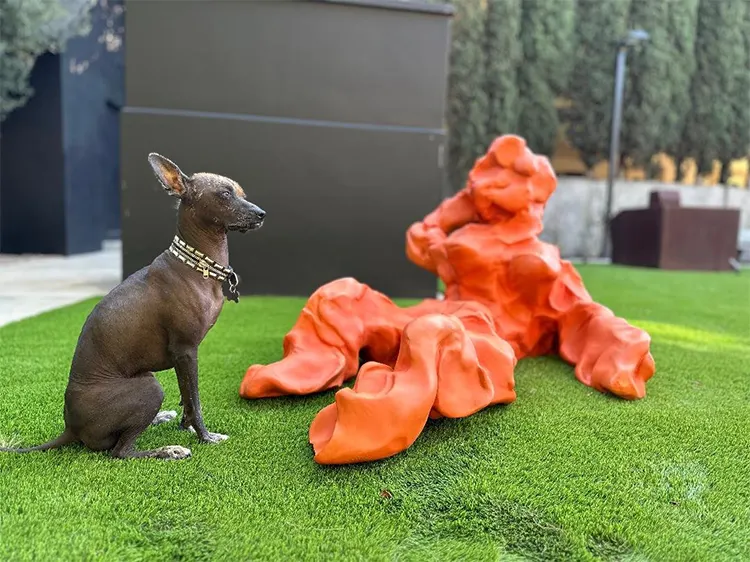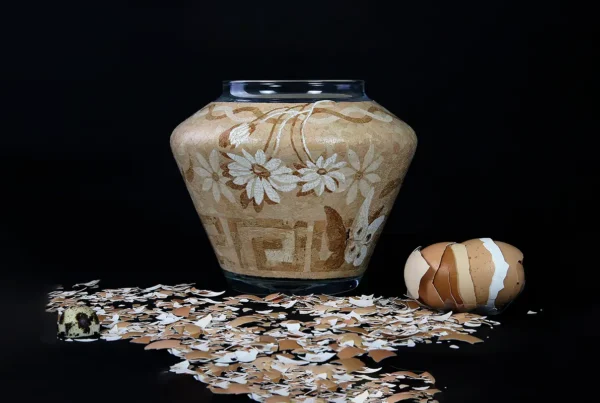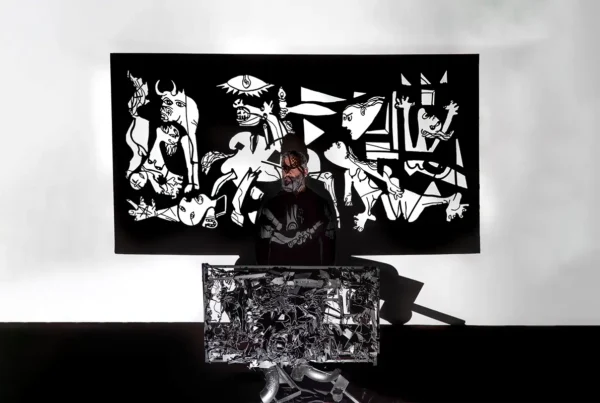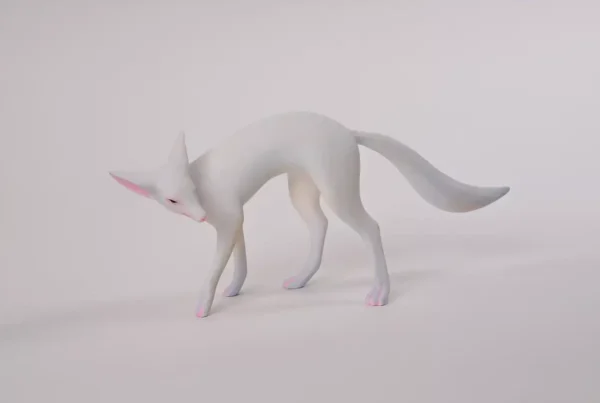Danny First: The Art of Reduction and Expression
Danny First’s ceramic busts are immediately recognizable for their stark minimalism and uncanny emotional depth. Rather than layering intricate details, he reduces his figures to their most essential elements: two holes for eyes, a nose, and a simple line for a mouth. Through subtle modifications in these features, each piece takes on a distinct personality, evoking expressions that range from forlorn to comically absurd. This balance between simplicity and emotional resonance is what gives his sculptures their unique presence. By stripping the human face down to its core, First invites the viewer to project their own interpretations and emotions onto his work, creating an intimate dialogue between art and audience.
The tension in First’s work stems from his ability to merge the rigidity of sculpture with a sense of empathy for the figures he creates. His busts, while undeniably formal in their materiality, possess an almost pitiful vulnerability. Their blank stares and rigid forms evoke both humor and melancholy, making them feel strangely relatable. This interplay between pathos and playfulness is central to his artistic vision. His figures are not mere caricatures; they are psychological studies in restraint, proving that the slightest shift in a line or curve can dramatically alter perception.
Humor plays a crucial role in First’s work, serving as an entry point for deeper engagement. While his sculptures often elicit a chuckle, they simultaneously reveal something awkward, even tragic, about human existence. The more First limits himself in his visual language, the greater the emotional impact. Each face, no matter how stark, invites contemplation about identity, vulnerability, and the absurdity of human expression. His ability to distill emotion into the most basic forms speaks to his mastery of visual storytelling, making his sculptures both intriguing and profoundly moving.
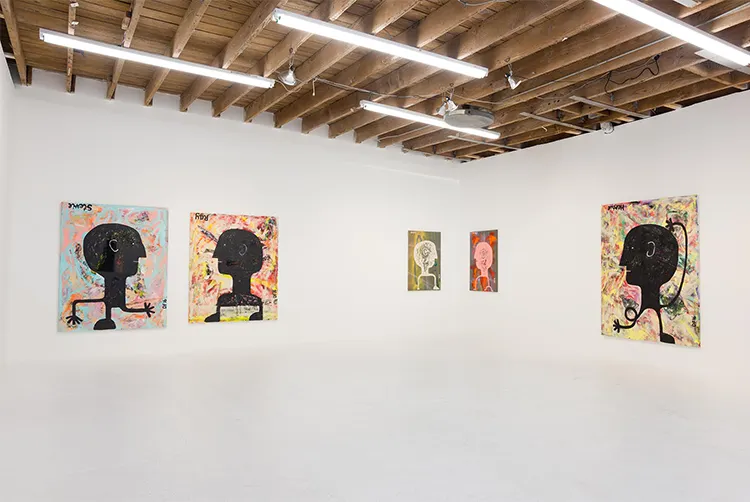
Danny First: From Functional Art to Public Engagement
Beyond his ceramic sculptures, First has also explored functional art, most notably through his series of benches made from recycled materials. Unlike his busts, which are designed for contemplation, these benches encourage direct physical engagement. Their rough, makeshift quality contrasts with their playful nature, as he often incorporates unexpected or witty text into their surfaces. By placing them in public spaces, First invites spontaneous interactions, challenging the traditional boundaries between art and utility.
The use of text on these benches adds another layer of meaning, transforming them from simple seating into thought-provoking installations. Whether through droll commentary or ironic statements, the inscriptions provoke curiosity and amusement. This irreverence reflects First’s broader artistic ethos—one that embraces imperfection, spontaneity, and humor as fundamental aspects of creativity. His benches defy the conventional idea that art should be observed from a distance; instead, they demand to be touched, used, and experienced in everyday life.
By embedding his work in public settings, First fosters a more democratic form of artistic engagement. Unlike gallery spaces that can feel exclusive or intimidating, his benches are accessible to anyone who happens upon them. This shift from passive observation to active participation reflects his broader interest in making art more inclusive. Whether through sculpture or functional objects, First’s work consistently encourages interaction, prompting viewers to rethink their relationship with the art that surrounds them.
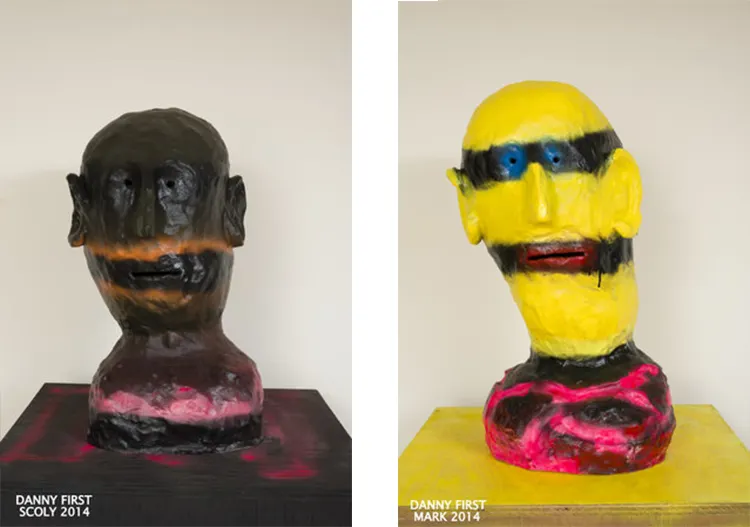
Championing Emerging Talent Through Alternative Art Spaces
First’s impact on the art world extends beyond his own practice; he has also cultivated vital spaces for emerging artists. What began as a personal project—a small exhibition space in his Hancock Park backyard—has grown into an influential platform known as The Cabin. Initially conceived as a modest venue to showcase work he admired, it quickly gained recognition as a launchpad for young artists. Many, such as Amoako Boafo, Genevieve Gaignard, and Tunji Adeniyi-Jones, have gone on to international acclaim, in part due to the visibility they gained through First’s exhibitions.
The success of The Cabin led to the creation of The Bunker, an underground gallery that allows him to display additional work, including an outdoor sculpture area humorously dubbed “The Fifth Plinth,” a nod to London’s Fourth Plinth. This evolution speaks to First’s growing commitment to fostering artistic talent. His passion for supporting emerging voices is further realized through The La Brea Studio Artists Residency, which provides artists with the opportunity to work in Los Angeles for a month before presenting their creations at one of his exhibition spaces. By offering both physical space and exposure, he helps artists establish themselves in an often challenging industry.
First’s curatorial approach is driven by instinct rather than rigid selection criteria. He gravitates toward artists with a strong, unique voice, often favoring figurative work, interiors, and textile-based pieces. While his taste leans toward the contemporary, what matters most to him is authenticity. His commitment to showcasing fresh and honest perspectives has made his spaces essential stops in LA’s art circuit. Through these initiatives, First has not only expanded his own artistic reach but has also played a key role in shaping the next generation of contemporary artists.
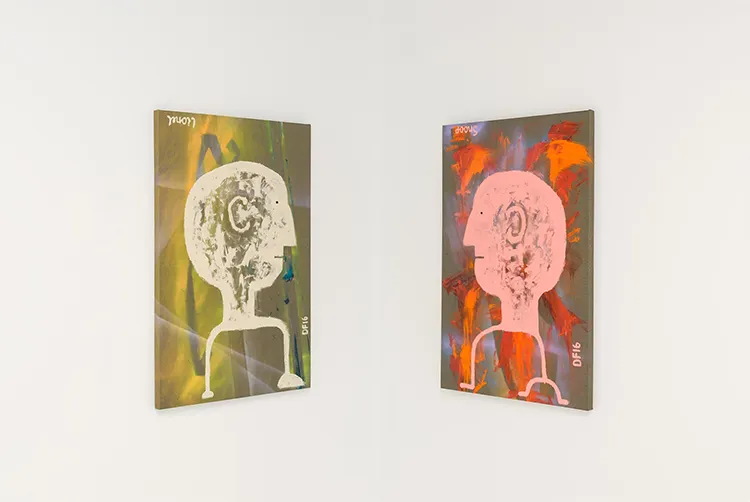
Danny First: A Collector’s Passion and the One That Got Away
First’s deep engagement with art extends to his role as a collector. His journey began in 1989 with the purchase of a Raymond Pettibon drawing—a modest ink-on-paper work that marked the start of a lifelong passion. At the time, spending $400 on a piece of art felt significant, but rather than viewing art as an investment, he has always approached collecting as an emotional pursuit. Unlike many collectors who buy and sell strategically, First holds onto his acquisitions, forming lasting connections with the pieces he chooses.
His collection has since grown to include works by some of the most compelling contemporary artists, including Berlin-based painter Kiriakos Tompolidis, whose textured and intricate canvases have recently captivated First’s attention. His philosophy is simple: when he connects with an artist’s work, he commits fully. Art, for him, is not about prestige or financial speculation but about the sheer joy of living with something that resonates. It is his singular indulgence, a passion that eclipses other material luxuries.
Despite his impressive collection, there are still pieces that haunt him—works he regrets not acquiring when he had the chance. One in particular stands out: a small Glenn Brown painting in the style of Frank Auerbach, which he hesitated to buy at Art Basel. Looking back, he wishes he had acted on impulse. Yet, his approach to collecting remains relaxed. He understands that the art world is vast, with new opportunities always on the horizon. His philosophy echoes the advice he once received from an old art fair acquaintance: “Don’t buy it.” The words, meant to encourage thoughtful decision-making, have stuck with him.
While some collectors have embraced the digital frontier of NFTs, First remains entirely uninterested. To him, digital art lacks the tangible presence that makes collecting so rewarding. He wants to live with art, to experience it in real space rather than on a screen. His passion for art is rooted in its physicality, its ability to transform a room, and its capacity to foster emotional connection. Whether as an artist, curator, or collector, First’s journey reflects a profound and unwavering dedication to the power of visual expression.
